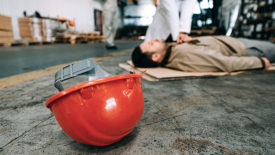Columns
Best Practices
Macroeconomics is key to OHS
Lower fertility rates in rich nations equals fewer workers to boost economy
March 21, 2022
Let’s celebrate women in construction
Since 2012, the number of women in the industry has increased 54%, to about 1.2M
March 17, 2022
Politics surround Pregnant Workers Act
Many organizations and businesses seek to influence direction of new law
February 28, 2022
Safety Talk
Hypothermia dangers increase as fatigue sets in and thought processes slow down
January 20, 2022
Become a Leader in Safety Culture
Build your knowledge with ISHN, covering key safety, health and industrial hygiene news, products, and trends.
JOIN TODAYCopyright ©2025. All Rights Reserved BNP Media.
Design, CMS, Hosting & Web Development :: ePublishing












